Regulatory Role of Silicon in Mediating Differential Stress Tolerance Responses in Two Contrasting Tomato Genotypes Under Osmotic Stress
- PMID: 30349552
- PMCID: PMC6187069
- DOI: 10.3389/fpls.2018.01475
Regulatory Role of Silicon in Mediating Differential Stress Tolerance Responses in Two Contrasting Tomato Genotypes Under Osmotic Stress
Abstract
Previous studies have shown the role of silicon (Si) in mitigating the adverse effect of drought stress in different crop species. However, data are lacking on a comparison of drought tolerant and drought sensitive crop cultivars in response to Si nutrition. Therefore, the aim of this study was to elucidate the mechanism (s) by which two contrasting tomato genotypes respond to Si nutrition under osmotic stress condition. Two tomato lines contrasting in their response to drought stress were hydroponically grown under polyethylene glycol (PEG, 6000) and two regimes of Si (0 and 1.5 mM). Metabolite profiling was performed in two lines. Growth and relevant physiological parameters, and expression levels of selected genes were also measured. Si application resulted in improved osmotic stress tolerance in both drought tolerant line LA0147 and drought sensitive line FERUM. In the drought tolerant line, Si enhanced uptake of sulfur (S) and ammonium ( ) which led to a significantly higher production of amino acids arginine, methionine, serine, and glycine. While in the drought sensitive line, Si significantly increased production of amino acids proline and GABA which further lowered the level of GSSG to GSH ratio and thus balanced the redox homeostasis under osmotic stress. The higher significant production of amino acids arginine, methionine, GABA, and proline enhanced production of free polyamines putrescine and spermidine and improved osmotic stress tolerance. Therefore, we conclude that Si distinctively regulated osmotic stress tolerance in two contrasting tomato genotypes by differential accumulation of relevant amino acids which eventually led to enhanced polyamine metabolism.
Keywords: amino acids; metabolites; mineral nutrition and redox state; polyamines; tomato.
Figures

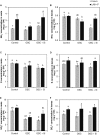

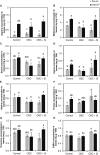
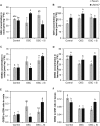
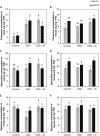
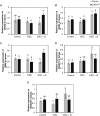

Similar articles
-
Silicon alleviates salt and drought stress of Glycyrrhiza uralensis seedling by altering antioxidant metabolism and osmotic adjustment.J Plant Res. 2017 May;130(3):611-624. doi: 10.1007/s10265-017-0927-3. Epub 2017 Mar 13. J Plant Res. 2017. PMID: 28290079
-
Novel insights into the mechanism(s) of silicon-induced drought stress tolerance in lentil plants revealed by RNA sequencing analysis.BMC Plant Biol. 2023 Oct 17;23(1):498. doi: 10.1186/s12870-023-04492-5. BMC Plant Biol. 2023. PMID: 37848813 Free PMC article.
-
The effects of putrescine pre-treatment on osmotic stress responses in drought-tolerant and drought-sensitive wheat seedlings.Physiol Plant. 2021 Feb;171(2):200-216. doi: 10.1111/ppl.13150. Epub 2020 Jul 12. Physiol Plant. 2021. PMID: 32548914
-
Mechanisms of silicon-mediated alleviation of drought and salt stress in plants: a review.Environ Sci Pollut Res Int. 2015 Oct;22(20):15416-31. doi: 10.1007/s11356-015-5305-x. Epub 2015 Sep 3. Environ Sci Pollut Res Int. 2015. PMID: 26335528 Review.
-
The Role of Silicon in Higher Plants under Salinity and Drought Stress.Front Plant Sci. 2016 Jul 18;7:1072. doi: 10.3389/fpls.2016.01072. eCollection 2016. Front Plant Sci. 2016. PMID: 27486474 Free PMC article. Review.
Cited by
-
Mechanisms of Silicon-Mediated Amelioration of Salt Stress in Plants.Plants (Basel). 2019 Aug 27;8(9):307. doi: 10.3390/plants8090307. Plants (Basel). 2019. PMID: 31461994 Free PMC article. Review.
-
The Ameliorative Effect of Silicon on Maize Plants Grown in Mg-Deficient Conditions.Int J Mol Sci. 2019 Feb 22;20(4):969. doi: 10.3390/ijms20040969. Int J Mol Sci. 2019. PMID: 30813370 Free PMC article.
-
Silicon-induced thermotolerance in Solanum lycopersicum L. via activation of antioxidant system, heat shock proteins, and endogenous phytohormones.BMC Plant Biol. 2020 Jun 3;20(1):248. doi: 10.1186/s12870-020-02456-7. BMC Plant Biol. 2020. PMID: 32493420 Free PMC article.
-
The potential of SiK® fertilization in the resilience of chestnut plants to drought - a biochemical study.Front Plant Sci. 2023 Jun 26;14:1120226. doi: 10.3389/fpls.2023.1120226. eCollection 2023. Front Plant Sci. 2023. PMID: 37448863 Free PMC article.
-
Physiological, Biochemical, and Yield Responses of Linseed (Linum usitatissimum L.) in α-Tocopherol-Mediated Alleviation of Salinity Stress.Front Plant Sci. 2022 Jun 3;13:867172. doi: 10.3389/fpls.2022.867172. eCollection 2022. Front Plant Sci. 2022. PMID: 35720587 Free PMC article.
References
-
- Amin M., Ahmad R., Ali A., Hussain I., Mahmood R., Aslam M., et al. (2016). Influence of silicon fertilization on maize performance under limited water supply. Silicon 10 177–183. 10.1007/s12633-015-9372-x - DOI
LinkOut - more resources
Full Text Sources

